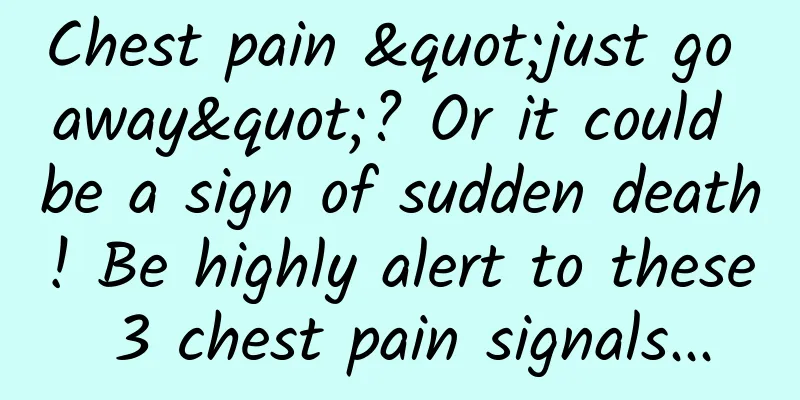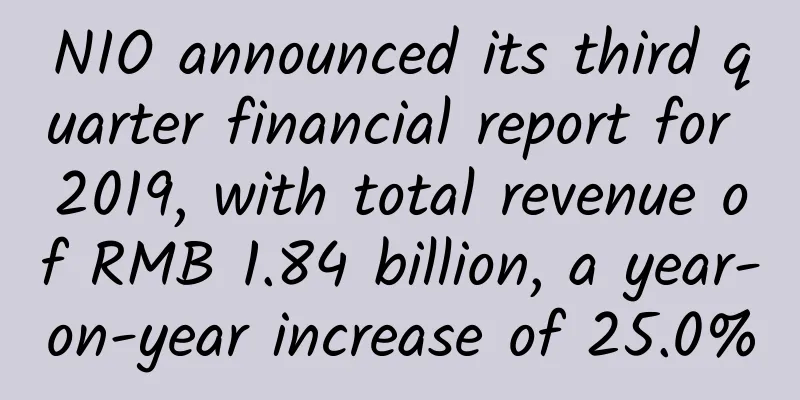Chest pain "just go away"? Or it could be a sign of sudden death! Be highly alert to these 3 chest pain signals...

|
Expert of this article: Zhao Jing, attending physician, Third Medical Center, PLA General Hospital This article was reviewed by Li Jiehui, deputy chief physician, Fuwai Hospital, Chinese Academy of Medical Sciences I don’t know if you have ever had this experience: you have always been in good health, but sometimes you suddenly feel chest pain, can’t breathe, and feel very uncomfortable… Copyrighted images from the gallery, unauthorized reproduction, please contact the original author Is there something wrong with my heart? Is this a heart attack? Will I die suddenly? But sometimes the pain only lasts for a short while. Do I need to go to the hospital for check-up for such chest pain? I believe many of you have this question: Why do you have chest pain? Which chest pains don't need to be taken seriously? Which chest pains require you to go to the hospital? Let's take a comprehensive look. What are the common causes of chest pain? Chest pain is a common clinical symptom with many causes involving multiple systems, including cardiac, pulmonary, gastrointestinal, skeletal muscle, and functional. Copyrighted images from the gallery, unauthorized reproduction, please contact the original author According to the investigation of the causes of chest pain in patients, acute chest pain is more common in cardiac chest pain. Cardiac chest pain is more dangerous than other chest pains, so when considering non-cardiac chest pain during medical treatment, cardiac chest pain must be ruled out first. Cardiac chest pain It is common in aortic dissection, acute myocardial infarction, pulmonary embolism, etc. Aortic dissection is often accompanied by hypertension and severe pain. Chest X-rays often show widened mediastinum. Cardiovascular ultrasound and chest CT angiography can confirm the diagnosis. Copyrighted images from the gallery, unauthorized reproduction, please contact the original author Acute myocardial infarction is manifested by chest tightness, angina, sweating, and a sense of impending death. Oral nitroglycerin does not relieve the symptoms. An electrocardiogram shows myocardial ischemia, and an electrocardiogram and myocardial enzyme test are performed to confirm the diagnosis. Common symptoms of pulmonary embolism are unexplained dyspnea and shortness of breath, which are more obvious after activity, chest pain, syncope, irritability, hemoptysis, etc. The above situations are mostly emergencies and require timely medical treatment to avoid missing the best time for treatment, endangering life and causing sudden death. Pulmonary chest pain It is common in pleurisy, pneumothorax, pneumonia, pleural tumors, lung cancer, etc. Pneumothorax is also an internal medicine emergency. The incidence rate is higher in men than in women. The severity of symptoms is related to the presence or absence of underlying lung diseases and functional status, the speed of pneumothorax, the amount of gas accumulated in the pleural cavity, and the pressure. The main manifestation is that the patient suddenly feels chest pain on one side, which is like a needle or knife, and lasts for a short time, followed by symptoms such as chest tightness and difficulty breathing. Copyrighted images from the gallery, unauthorized reproduction, please contact the original author Pneumonia is often accompanied by infectious symptoms such as fever, cough, and sputum. Routine blood tests and chest CT scans are required for a definitive diagnosis. Musculoskeletal chest pain It is common in herpes zoster, intercostal neuralgia, rib fractures, etc. Shingles is an infectious disease caused by the varicella-zoster virus. The rash can be seen on the chest wall in a band-like distribution. You need to see an infectious disease department or dermatologist. Copyrighted images from the gallery, unauthorized reproduction, please contact the original author Intercostal neuralgia is mostly a subjective symptom of the patient, and the pain is characterized by a strip-like distribution in the chest or abdomen. You need to see a thoracic doctor. Rib fractures often have a history of trauma and limited chest wall movement, requiring consultation with a thoracic surgeon. Gastrointestinal chest pain It is common in esophagitis, gastroesophageal reflux, hiatal hernia, esophageal cancer, mediastinal tumors, etc. The most common symptoms of esophagitis and gastroesophageal reflux are acid reflux and heartburn. Chest pain is mostly caused by reflux irritation to the esophagus. The early symptoms of esophageal cancer are often atypical and easily overlooked, mainly manifested as discomfort behind the sternum, burning sensation, tingling or pulling pain. If relevant symptoms occur, it is recommended to see a gastroenterologist in time for a clear diagnosis. Functional chest pain It is more common in cardiac neurosis, usually caused by psychological disease or endocrine disorder. Most of them have no organic heart disease. Which chest pains are dangerous? If the chest pain is momentary and not severe, and there is no other discomfort or concurrent disease, there is no need to be overly nervous, take a rest, and observe whether there are any subsequent changes. If there are other uncomfortable symptoms, or transient pain occurs frequently, it is recommended to see a doctor. Persistent and severe chest pain is often the most dangerous and often indicates the presence of an acute disease. It is common in acute myocardial infarction, aortic dissection, pulmonary embolism, etc. At this time, time is life, and you need to call 120 emergency number immediately. What should I do if I have chest pain? If persistent chest pain occurs, the symptoms gradually worsen, and rest or medication cannot relieve it, you need to see a doctor promptly. If pain in the precordial area occurs and the symptoms are relieved or disappear after resting for a few minutes or taking nitroglycerin orally, consider the possibility of angina pectoris and it is recommended that you visit the cardiology department of a hospital. Copyrighted images from the gallery, unauthorized reproduction, please contact the original author If pain behind the sternum is accompanied by symptoms such as acid reflux and heartburn, consider the possibility of gastrointestinal chest pain. You can eat some soda crackers. If the symptoms recur, it is recommended to visit the gastroenterology department for a gastroscopy to confirm the diagnosis. How to prevent chest pain? Prevention of cardiac chest pain: Eat a light diet and control high-risk factors, such as hypertension, diabetes, hyperlipidemia, etc. Quit smoking and drinking. Copyrighted images from the gallery, unauthorized reproduction, please contact the original author Prevention of gastrointestinal chest pain: Reduce factors that cause increased abdominal pressure, such as obesity, constipation, tight belts, etc.; avoid eating high-fat foods, chocolate, strong tea, coffee, etc. Quit smoking and drinking. The pictures in this article with the "Science Popularization China" watermark are all from the copyright gallery. The pictures are not authorized for reprinting. |
<<: The right bank of the Irtysh River: the colorful hill
Recommend
Blindness is darkness, blindness is blankness, and it happens to one in 50 people!!!
Let's do a test first. Please close your eyes...
2019 College Entrance Examination Marketing Tips are here!
Abstract: With extremely high popularity, rich an...
120% of people turn their heads to look at this electric three-wheeled classic car, which is cooler than a Ferrari
Italy is the oldest fashion capital and has the l...
How much does it cost to outsource WeChat mini programs? What does the price of outsourcing WeChat Mini Program development include?
How much does it cost to outsource WeChat mini pr...
10 secrets of why iPhone is so expensive, let Apple continue to fly for a while
Apple's biggest adventure was completed last ...
Mingguang SEO Training: Web crawler crawling strategies that you must know when outsourcing website optimization
With the explosion of Internet information, peopl...
How does "Fluent Reading", which has been all over the WeChat Moments, operate a community?
This article will analyze the community from four...
The sweeter the fruit, the more sugar it contains! Some fruits are not sweet, but they are full of sugar!
In? Have you kept your sugar intake under control...
Tesla's logic and troubles in moving eastward: There are still three major problems to be solved in building a factory
The rumor was eventually debunked in the clarific...
All the methods and techniques to make money quickly on Zhihu are here!
I had just come into contact with Zhihu at this t...
Is it easy to eat and drink healthily during the Spring Festival? Just remember these few numbers →
During the Spring Festival, there are so many del...
Double Eleven express delivery has arrived one after another, the correct way to receive express delivery →
On November 13, the State Post Bureau issued a no...
Re-understand the brand’s “differentiation”!
Creating "differentiation" has become a...
TLAttributedLabel Image and text mashup
Source code introduction: TLAttributedLabel image...
An article to clarify the ranking issues of bidding ads
In the early years, when Baidu bidding had not ye...









